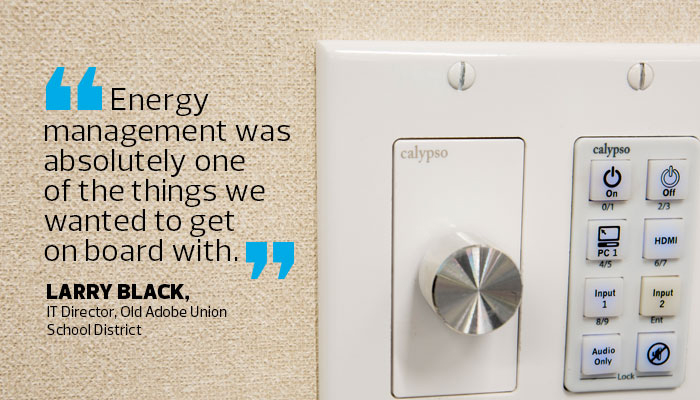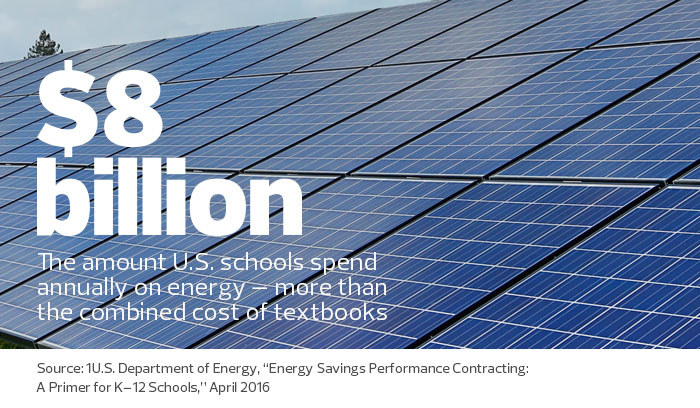IoT Helps Control Education Environments
For decades, many school buildings have almost literally been dumping money out of their windows. Plagued by temperamental and antiquated utility systems, these schools struggled to regulate classroom temperatures, with some students forced to bundle up and others opening windows in the dead of winter to let out excess heat.
Mercifully — both for schools’ comfort levels and budget numbers — this is beginning to change, as older systems get replaced by newer ones. And increasingly, IT shops are playing a role in helping to improve comfort and cut costs through the implementation and management of smart systems.
At Old Adobe Union School District in Petaluma, Calif., for example, a Mitsubishi BACnet controller ties into Alerton software, giving district officials access to a central dashboard where they can monitor the performance of HVAC systems throughout all its schools.
“With the heat, you can see if the burner is on and what the room temperatures are,” says Benjamin Borrego, the district’s director of facilities and transportation. “It has also allowed us to troubleshoot. If there’s a problem, it tells us, and we’re able to regulate the temperatures automatically.”
Four years ago, the district passed a $20 million bond to tackle infrastructure concerns, including network upgrades. “Energy management was absolutely one of the things we wanted to get on board with,” says Larry Black, IT director for Old Adobe Union. Black says he considers the district to still be in the beginning stages of incorporating smart systems that reduce energy consumption, ease facilities management and cut costs. The district has upgraded to high-efficiency LED bulbs, and its lights use occupancy sensors to further improve efficiency; the lights, though, are not tied into a central dashboard like the HVAC systems are.

Exhaust fans also operate based on occupancy, and some buildings have smart skylight systems that open and close based on lighting needs.
The district is also exploring IP-enabled cameras; they’re controlled by an outside organization. The district also hosts several large solar arrays, which provide Old Adobe Union with offset credits. “We’re part way there, but the solutions are always shifting,” Black says. “We’re always looking to do better.”
The Benefits of Environmental IT
Ideally, says Gregory Raffio, an engineer with Go Sustainable Energy in Columbus, Ohio, smart systems will help schools optimize their energy use to the point that virtually no kilowatt is wasted. When schools achieve this level of efficiency, Raffio says, they are sometimes able to entirely offset their energy consumption with onsite production of renewable energy.
“The theoretical potential is that you drop the energy consumption down to only that which is necessary for every function,” Raffio says. “Every light that’s not being used is off. Every time a fan doesn’t have to be spinning, it’s not going to be powered up. Go down the list, and the potential is that you get a building that’s essentially a net-zero energy facility. That’s the theoretical potential, and that’s what’s being witnessed in many cases.”
In schools with smart environmental systems, sensors are often placed around school spaces like doors and windows to help monitor things like occupancy, movement, temperature, air quality and natural lighting. Data collected by these sensors is then fed either to a district’s data center or to a cloud-based repository, and run through analytics programs that give maintenance and IT staffers a clear, real-time window into the performance of school buildings.
These systems can make adjustments based on conditions — for example, decreasing the level of ventilation in a near-empty auditorium during rehearsal as opposed to a packed house during the show — or they can be controlled by staff via dashboards or mobile apps.
Creating Proactive Solutions with IoT
Consolidated School District 59, in the Chicago suburb of Arlington Heights, has completed about 75 percent of a project to replace florescent tube lighting with LED bulbs throughout its 14 schools. “The LEDs supply much brighter classrooms for about a third of the watts,” says Eric Swanson, director of maintenance operations. “We’ve always been proactive with our energy use.”
The new lights are IP-enabled, allowing the district to connect them to its network. For now, the district has programmed each classroom with push-button settings — for example, if a teacher wants to show a movie, he or she can press a button, and the front row of lights will go off, while the rest of the room will be dimmed. Once the light replacement is complete, the district will explore ways to use centralized controls. One potential use case, Swanson says, is centrally turning off all of the district’s lighting to hamper intruders in case of a school attack.
Other schools are using connected lighting to help them deliver superior instruction. Opelika (Ala.) High School uses Crestron lighting control to help art students better understand lighting and color. The school’s two new art rooms, part of a $39 million renovation project, feature color-changing LED lighting systems. Teachers and students use 7-inch touch screens to control the color and coverage of each fixture, and the lights help students to understand how small changes in color and shadow affect the appearance of objects.
In Virginia Beach, Va., the public school district has been on a mission in recent years to make its school buildings as efficient as possible, and is about to start construction on its 10th building that will be LEED certified by the U.S. Green Building Council. Tim Cole, sustainability officer for the district, says that connected utility systems have been central to the effort.

“All the new buildings incorporate motion sensors to turn on and off lights,” he says. “They all have light sensors that determine how much sun is shining in through the windows, so you’re not using your lighting at 100 percent capacity.” “Collection of data,” Cole adds, “is key to what we’re trying to do.”
Confronting Implementation Challenges
While smart systems are helping Virginia Beach’s schools to cut costs and reduce their environmental impact, Cole says that the district has had some problems with the reporting of data on central dashboards. For example, a dashboard might report the same number of gallons of water used for the day, the month and the entire year. This is particularly frustrating, Cole says, because the district thinks of its green school buildings as teaching tools, and students aren’t able to crunch energy numbers when the data coming into the dashboards is off.
“It’s been a struggle,” Cole says. “We’re still working on that, and we haven’t quite figured it out.”
Raffio says that smart systems often aren’t programmed correctly when they’re installed, which reduces or eliminates the benefits of investing in them. Unless school districts have someone knowledgeable about environmental IT in-house, Raffio recommends working with a third-party vendor that can ensure schools are getting the value that they’re paying for.
“I’ve seen it implemented well, and I’ve seen it implemented poorly,” he says. “I think it has a lot to do with experience. If districts do implement smart systems correctly, the potential is almost limitless.”








